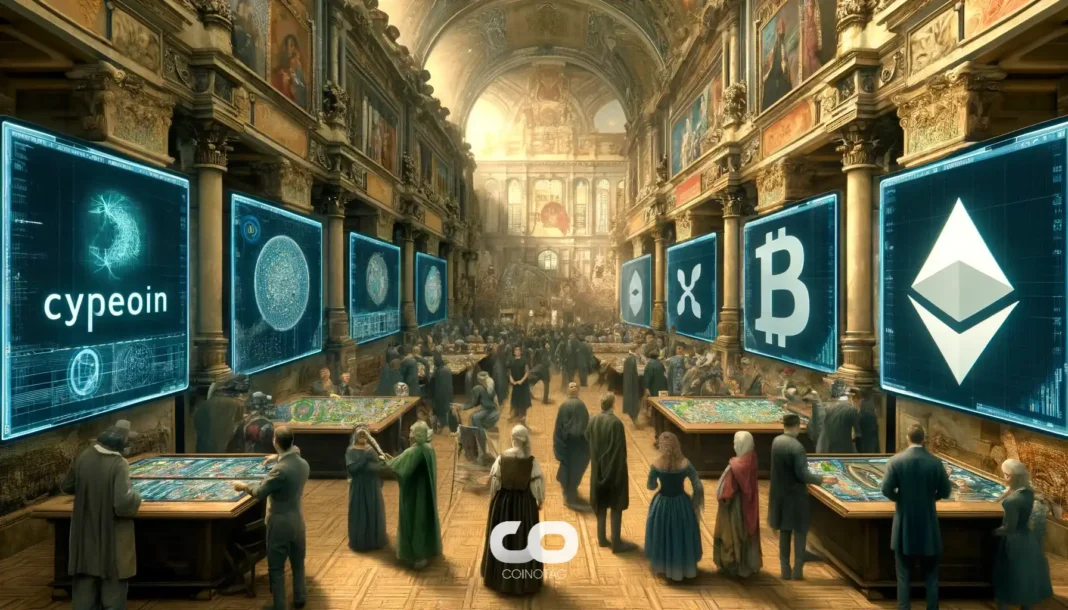| COINOTAG recommends • Exchange signup |
| 💹 Trade with pro tools |
| Fast execution, robust charts, clean risk controls. |
| 👉 Open account → |
| COINOTAG recommends • Exchange signup |
| 🚀 Smooth orders, clear control |
| Advanced order types and market depth in one view. |
| 👉 Create account → |
| COINOTAG recommends • Exchange signup |
| 📈 Clarity in volatile markets |
| Plan entries & exits, manage positions with discipline. |
| 👉 Sign up → |
| COINOTAG recommends • Exchange signup |
| ⚡ Speed, depth, reliability |
| Execute confidently when timing matters. |
| 👉 Open account → |
| COINOTAG recommends • Exchange signup |
| 🧭 A focused workflow for traders |
| Alerts, watchlists, and a repeatable process. |
| 👉 Get started → |
| COINOTAG recommends • Exchange signup |
| ✅ Data‑driven decisions |
| Focus on process—not noise. |
| 👉 Sign up → |
-
The recent proposal by Ethereum’s co-founder Vitalik Buterin to transition from the Ethereum Virtual Machine (EVM) to RISC-V brings a transformative vision to the cryptocurrency landscape.
-
This strategic shift could enhance Ethereum’s performance by simplifying its architecture, potentially making it as straightforward as Bitcoin.
-
Buterin highlighted that this change would not only streamline operations but also increase participation in protocol research, making the technology more accessible.
This article explores Vitalik Buterin’s proposal for a shift to RISC-V in Ethereum, analyzing its potential impact on performance and architecture.
Ethereum’s Transition: From EVM to RISC-V
In a groundbreaking initiative, Vitalik Buterin has proposed replacing Ethereum’s customized Virtual Machine (EVM) with RISC-V, an open-source instruction set architecture. This shift is aimed at significantly enhancing Ethereum’s performance while simplifying its underlying structure.
Understanding the Proposal’s Mechanisms
According to Buterin, the advantages of RISC-V include a more direct operation processing that could bolster execution speeds, making certain functions up to 100 times faster. The EVM currently requires a series of translations that hinder efficiency, whereas RISC-V allows for streamlined communication between software and processors. This shift could enable applications to execute directly on the execution layer, radically transforming how transactions are processed.
Challenges of Implementing RISC-V
While the benefits are clear, the transition poses notable challenges. The change could risk breaking backward compatibility and necessitate extensive retraining for developers. Moreover, as noted by analyst Dominick John, the restructuring demands a consensus across Ethereum’s fragmented governance landscape. These factors underscore a considerable coordination challenge for the network.
| COINOTAG recommends • Professional traders group |
| 💎 Join a professional trading community |
| Work with senior traders, research‑backed setups, and risk‑first frameworks. |
| 👉 Join the group → |
| COINOTAG recommends • Professional traders group |
| 📊 Transparent performance, real process |
| Spot strategies with documented months of triple‑digit runs during strong trends; futures plans use defined R:R and sizing. |
| 👉 Get access → |
| COINOTAG recommends • Professional traders group |
| 🧭 Research → Plan → Execute |
| Daily levels, watchlists, and post‑trade reviews to build consistency. |
| 👉 Join now → |
| COINOTAG recommends • Professional traders group |
| 🛡️ Risk comes first |
| Sizing methods, invalidation rules, and R‑multiples baked into every plan. |
| 👉 Start today → |
| COINOTAG recommends • Professional traders group |
| 🧠 Learn the “why” behind each trade |
| Live breakdowns, playbooks, and framework‑first education. |
| 👉 Join the group → |
| COINOTAG recommends • Professional traders group |
| 🚀 Insider • APEX • INNER CIRCLE |
| Choose the depth you need—tools, coaching, and member rooms. |
| 👉 Explore tiers → |
Technological Maturity vs. Market Value
Despite these hurdles, experts suggest that the future of Ethereum does not solely hinge on its market price. Thad Pinakiewicz from Galaxy noted, “Price isn’t the scoreboard for technological maturity.” This perspective indicates that Ethereum’s foundational work could serve as a template for future innovations within the blockchain ecosystem.
Looking Forward: Ethereum’s Innovative Path
As Ethereum navigates this pivotal transition, its ability to adapt to new technological paradigms will be crucial for its survival and relevance. Buterin’s proposal highlights a significant evolutionary step that could not only simplify the network but also create a more inclusive environment for developers and researchers.
| COINOTAG recommends • Exchange signup |
| 📈 Clear interface, precise orders |
| Sharp entries & exits with actionable alerts. |
| 👉 Create free account → |
| COINOTAG recommends • Exchange signup |
| 🧠 Smarter tools. Better decisions. |
| Depth analytics and risk features in one view. |
| 👉 Sign up → |
| COINOTAG recommends • Exchange signup |
| 🎯 Take control of entries & exits |
| Set alerts, define stops, execute consistently. |
| 👉 Open account → |
| COINOTAG recommends • Exchange signup |
| 🛠️ From idea to execution |
| Turn setups into plans with practical order types. |
| 👉 Join now → |
| COINOTAG recommends • Exchange signup |
| 📋 Trade your plan |
| Watchlists and routing that support focus. |
| 👉 Get started → |
| COINOTAG recommends • Exchange signup |
| 📊 Precision without the noise |
| Data‑first workflows for active traders. |
| 👉 Sign up → |
Conclusion
Vitalik Buterin’s vision for Ethereum, featuring a transition to RISC-V, encapsulates a bold attempt to enhance operational efficiency while maintaining the essence of decentralization and simplicity. As the community deliberates on this proposal, it serves as a reminder of the constant evolution inherent in the cryptocurrency space, promising a future where Ethereum might achieve unprecedented technological maturity.
| COINOTAG recommends • Members‑only research |
| 📌 Curated setups, clearly explained |
| Entry, invalidation, targets, and R:R defined before execution. |
| 👉 Get access → |
| COINOTAG recommends • Members‑only research |
| 🧠 Data‑led decision making |
| Technical + flow + context synthesized into actionable plans. |
| 👉 Join now → |
| COINOTAG recommends • Members‑only research |
| 🧱 Consistency over hype |
| Repeatable rules, realistic expectations, and a calmer mindset. |
| 👉 Get access → |
| COINOTAG recommends • Members‑only research |
| 🕒 Patience is an edge |
| Wait for confirmation and manage risk with checklists. |
| 👉 Join now → |
| COINOTAG recommends • Members‑only research |
| 💼 Professional mentorship |
| Guidance from seasoned traders and structured feedback loops. |
| 👉 Get access → |
| COINOTAG recommends • Members‑only research |
| 🧮 Track • Review • Improve |
| Documented PnL tracking and post‑mortems to accelerate learning. |
| 👉 Join now → |







